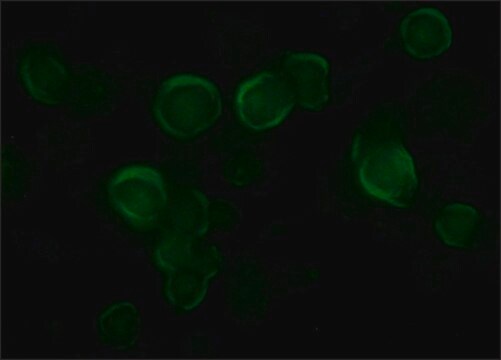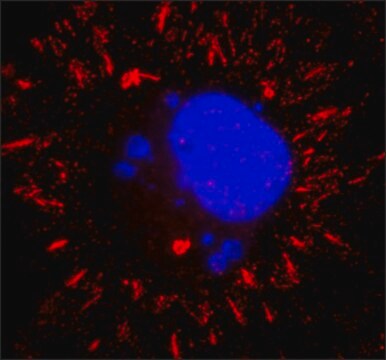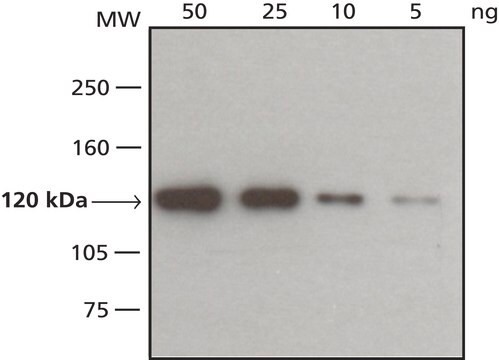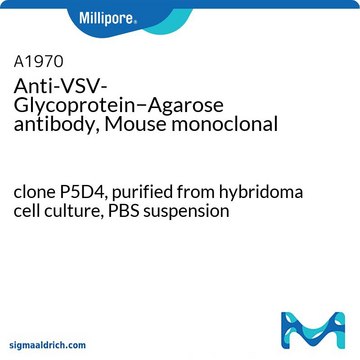V5507
Monoclonal Anti-VSV Glycoprotein antibody produced in mouse
clone P5D4, ascites fluid
Sinónimos:
Monoclonal Anti-VSV Glycoprotein
About This Item
Productos recomendados
biological source
mouse
conjugate
unconjugated
antibody form
ascites fluid
antibody product type
primary antibodies
clone
P5D4, monoclonal
contains
15 mM sodium azide
technique(s)
immunocytochemistry: suitable
immunoprecipitation (IP): suitable
western blot: 1:100,000 using whole cell extracts expressing VSV-G tagged fusion protein
isotype
IgG1
shipped in
dry ice
storage temp.
−20°C
target post-translational modification
unmodified
¿Está buscando productos similares? Visita Guía de comparación de productos
Specificity
Immunogen
Application
Flow cytometry/Cell sorting (1 paper)
Storage and Stability
Disclaimer
¿No encuentra el producto adecuado?
Pruebe nuestro Herramienta de selección de productos.
Storage Class
10 - Combustible liquids
wgk_germany
nwg
flash_point_f
Not applicable
flash_point_c
Not applicable
Certificados de análisis (COA)
Busque Certificados de análisis (COA) introduciendo el número de lote del producto. Los números de lote se encuentran en la etiqueta del producto después de las palabras «Lot» o «Batch»
¿Ya tiene este producto?
Encuentre la documentación para los productos que ha comprado recientemente en la Biblioteca de documentos.
Nuestro equipo de científicos tiene experiencia en todas las áreas de investigación: Ciencias de la vida, Ciencia de los materiales, Síntesis química, Cromatografía, Analítica y muchas otras.
Póngase en contacto con el Servicio técnico








